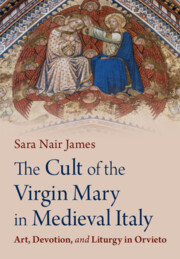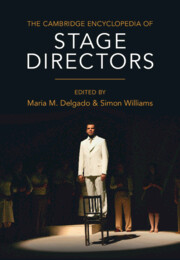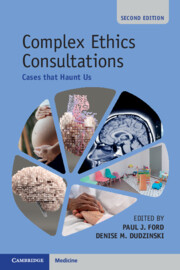Refine search
Actions for selected content:
403 results
Mashing It Up: Creative Writing Pedagogy and the Affective Possibilities of Genre Meeting Climate Fiction
-
- Journal:
- Australian Journal of Environmental Education , First View
- Published online by Cambridge University Press:
- 22 August 2025, pp. 1-13
-
- Article
-
- You have access
- Open access
- HTML
- Export citation
5 - De-Confusing Confession at Finnegans Wake
-
-
- Book:
- The Cambridge Companion to James Joyce
- Published online:
- 14 August 2025
- Print publication:
- 21 August 2025, pp 84-101
-
- Chapter
- Export citation
22 - Illuminated Manuscripts
- from Part II - Artefacts and Evidence
-
- Book:
- The Cambridge Encyclopaedia of Late Antique Art and Archaeology
- Published online:
- 04 July 2025
- Print publication:
- 31 July 2025, pp 407-420
-
- Chapter
- Export citation
Chapter 3 - Broken Narratives
-
- Book:
- Healing and the Invention of Metaphor
- Published online:
- 17 July 2025
- Print publication:
- 31 July 2025, pp 61-85
-
- Chapter
- Export citation
Chapter 5 - Healing Fictions: Narrative Transformations of the Self
-
- Book:
- Healing and the Invention of Metaphor
- Published online:
- 17 July 2025
- Print publication:
- 31 July 2025, pp 116-145
-
- Chapter
- Export citation
To measure the straight distance, by travelling the winding way
- Part of
-
- Journal:
- Memory, Mind & Media / Volume 4 / 2025
- Published online by Cambridge University Press:
- 29 July 2025, e7
-
- Article
-
- You have access
- Open access
- HTML
- Export citation

The Cult of the Virgin Mary in Medieval Italy
- Art, Devotion, and Liturgy in Orvieto
-
- Published online:
- 24 July 2025
- Print publication:
- 24 July 2025
Chapter 6 - The Image of Psychiatry and the Figure of the Psychiatrist in Literature
- from Part II - The Present and the Future
-
-
- Book:
- Values in Psychiatry
- Published online:
- 24 June 2025
- Print publication:
- 10 July 2025, pp 93-105
-
- Chapter
- Export citation
Chapter 19 - Cruising Utopia and the Queering of Latinx Literature
- from Part IV - Theoretical Turns
-
-
- Book:
- Latinx Literature in Transition, 1992–2020
- Published online:
- 19 June 2025
- Print publication:
- 03 July 2025, pp 352-366
-
- Chapter
- Export citation
Chapter 10 - Passing in Modernist Literature
- from Part II - Whiteness in the American Literary Imagination
-
-
- Book:
- Whiteness and American Literature
- Published online:
- 19 June 2025
- Print publication:
- 03 July 2025, pp 148-162
-
- Chapter
- Export citation
Chapter 8 - What Does Authenticity Do in Being and Time?
-
-
- Book:
- Heidegger's <i>Being and Time</i>
- Published online:
- 28 June 2025
- Print publication:
- 26 June 2025, pp 158-176
-
- Chapter
- Export citation
The future of ammonia use in 30 years: a deliberative experimental study envisioning the perspective of a future generation
-
- Journal:
- Global Sustainability / Volume 8 / 2025
- Published online by Cambridge University Press:
- 20 June 2025, e26
-
- Article
-
- You have access
- Open access
- HTML
- Export citation
Suffering and loss in Lewy body dementia: Applying a palliative care lens to a longitudinal narrative study
-
- Journal:
- Palliative & Supportive Care / Volume 23 / 2025
- Published online by Cambridge University Press:
- 20 June 2025, e117
-
- Article
-
- You have access
- Open access
- HTML
- Export citation

The Cambridge Encyclopedia of Stage Directors
-
- Published online:
- 19 June 2025
- Print publication:
- 03 July 2025
Attribution of subjective experience to geometric figures in narratives by autistic children and children with developmental language disorder
-
- Journal:
- Language and Cognition / Volume 17 / 2025
- Published online by Cambridge University Press:
- 19 June 2025, e52
-
- Article
-
- You have access
- Open access
- HTML
- Export citation
Chapter 27 - Realism and the Chinese Novel
- from Part IV - Locations of Realism
-
-
- Book:
- Realism and the Novel
- Published online:
- 05 June 2025
- Print publication:
- 19 June 2025, pp 389-399
-
- Chapter
- Export citation
Translating Made-in-Italy Across Time and Space
-
- Journal:
- Signs and Society ,
- Published online by Cambridge University Press:
- 23 May 2025, pp. 1-18
-
- Article
-
- You have access
- Open access
- HTML
- Export citation
3 - The Role of Tradition in Classical and Contemporary Argument
- from Part II - Key Rhetorical Concepts Animating Contemporary American Law
-
-
- Book:
- Rhetorical Traditions and Contemporary Law
- Published online:
- 02 May 2025
- Print publication:
- 22 May 2025, pp 42-69
-
- Chapter
-
- You have access
- Open access
- HTML
- Export citation

Complex Ethics Consultations
- Cases that Haunt Us
-
- Published online:
- 17 May 2025
- Print publication:
- 05 June 2025
12 - The Indispensability of Dominance
- from Part II - Civil Society, Social Media, and Political Messaging
-
-
- Book:
- Global Challenges to Democracy
- Published online:
- 01 May 2025
- Print publication:
- 15 May 2025, pp 233-254
-
- Chapter
- Export citation
